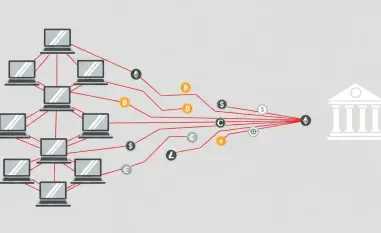Recent revelations highlight a sophisticated phishing campaign targeting businesses in Russia and Ukraine, employing two distinct malware strains known as DarkWatchman and Sheriff. Unfolding amidst geopolitical tensions, this cyber assault represents a significant threat, propelled by Hive0117—a well-known financially motivated threat group. Hive0117’s strategies involve leveraging phishing techniques to penetrate various industries, revealing the intertwining of financial objectives with broader geopolitical aims.
Introduction
In the complex geopolitical landscape of Eastern Europe, cyber threats have become increasingly pervasive and sophisticated. The latest phishing campaign targeting Russia and Ukraine underscores the intensity of these threats, with DarkWatchman and Sheriff emerging as primary instruments of cyber infiltration. These malware types, detected within sectors such as media, finance, biotechnology, and defense, propel concerns around both financial and geopolitical stability. The campaign’s significance is exacerbated by existing regional tensions, as Hive0117 cyber attackers exploit vulnerabilities to gather intelligence and disrupt operations.
Research Methodology, Findings, and Implications
Methodology
The discovery and analysis of DarkWatchman and Sheriff relied on advanced cyber-forensics techniques and tools. Analysts deployed sophisticated software to dissect the malware’s architecture, identifying key intrusion tactics and evasion strategies. Data gathering was meticulous, focusing on emails and server communications to unveil the intricacies of Hive0117’s operations. The deployment of techniques for examining fileless malware and Windows backdoors provided critical insights into the functioning of these cyber threats.
Findings
Analysis of DarkWatchman revealed its deployment in over 550 email addresses across various Russian industries through password-protected RAR archives, illustrating the pervasive reach of this fileless JavaScript-based remote access Trojan. The malware’s ability to evade detection is noteworthy, involving advanced tactics that impersonate legitimate entities and recycle domain data for command-and-control infrastructures. In Ukraine, Sheriff posed distinct threats to the defense sector, with the ability to execute remote commands and steal data via Dropbox, involving self-destruct mechanisms that heighten its evasiveness. Both malware strains highlight the escalating sophistication in Eastern Europe’s cyber threat landscape.
Implications
The ramifications of these cyber threats extend across affected industries, posing substantial risks to operational security and data integrity. Regionally, the campaign emphasizes vulnerabilities within sectors critical to national security, while globally, it accentuates the challenge of safeguarding against increasingly advanced cyber attacks. The financial motivations behind the campaign, intertwined with geopolitical strategies, signal a growing convergence of economic and political cyber warfare. These findings underscore the necessity for heightened vigilance and coordinated cybersecurity efforts across national borders.
Reflection and Future Directions
Reflection
Tracking Hive0117’s activities presented significant challenges due to the group’s elusive tactics and infrastructure. The research was fraught with complexities, demanding ongoing adaptation and resourcefulness to overcome sophisticated evasion techniques employed. Limitations arose in fully encapsulating Hive0117’s scope and narrative within the broader geopolitical context, offering insights yet revealing gaps in understanding the comprehensive impact of such cyber endeavors.
Future Directions
Future research should prioritize exploring the evolution of malware strains like DarkWatchman and Sheriff, delving deeper into Hive0117’s evolving methodologies. Investigating potential defensive measures and fostering international collaborations can aid in countering similar campaigns. A strategic focus on understanding threat actors’ behaviors will advance the field, providing opportunities to preemptively mitigate cyber threats and enhance global cybersecurity resilience.
Conclusion
The insights from this phishing campaign offer a profound understanding of contemporary cyber threats. As Hive0117’s activities unfold in Russia and Ukraine, the research delineates a significant interplay between financial and geopolitical motives in Eastern Europe. These revelations emphasize the urgency for heightened security measures and collaborative global efforts to combat cybercrime. Ultimately, the findings serve as a vital contribution to understanding, anticipating, and countering future threats, reinforcing the importance of preparedness and vigilance in cybersecurity landscapes.













